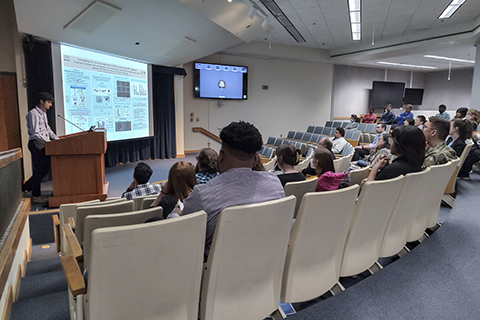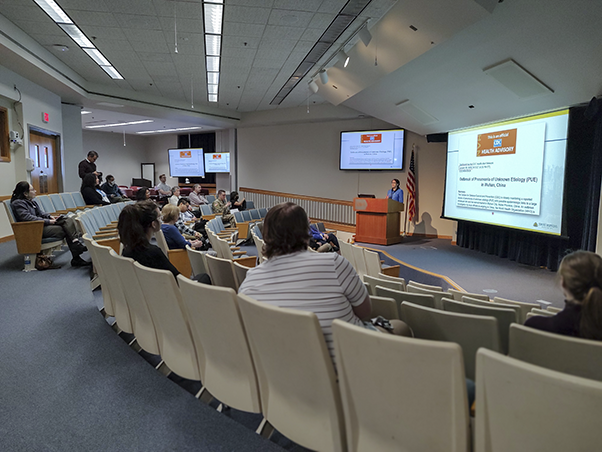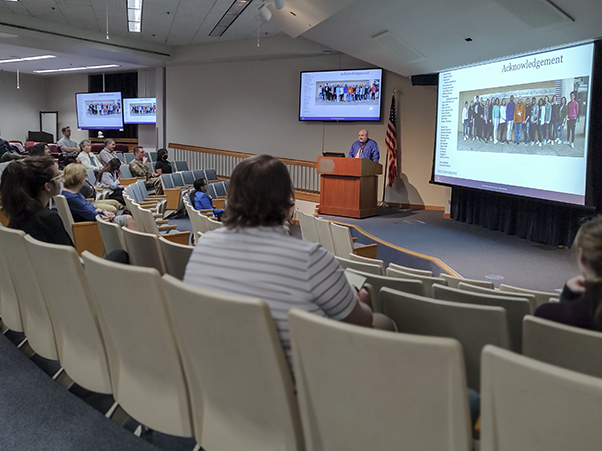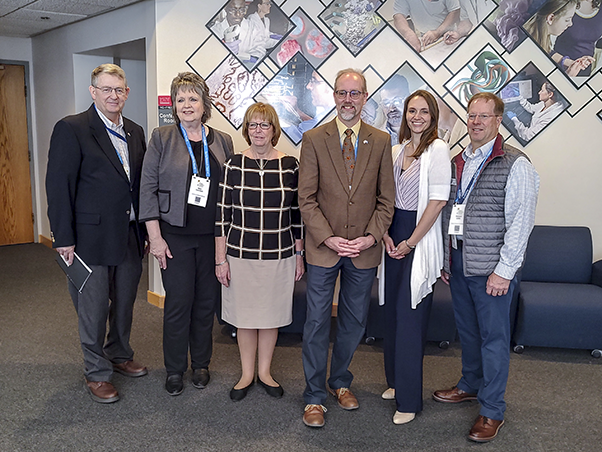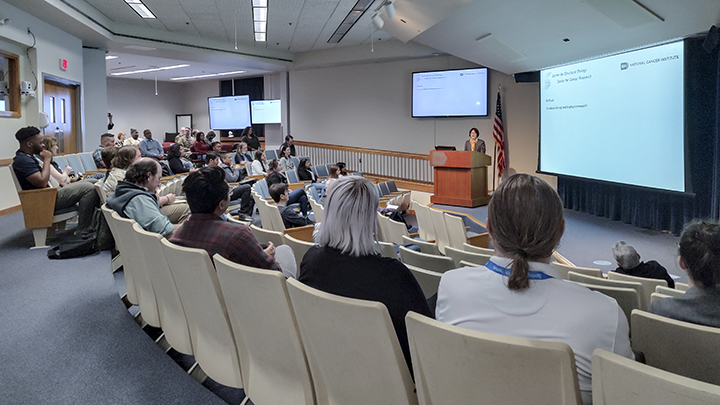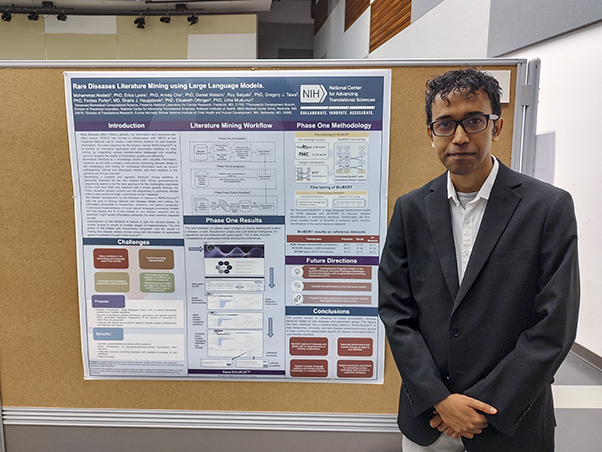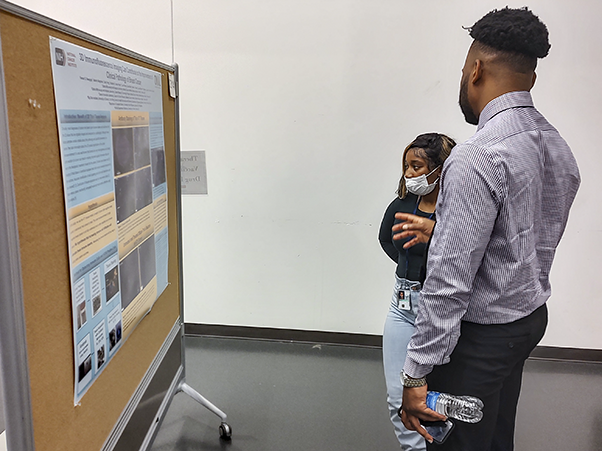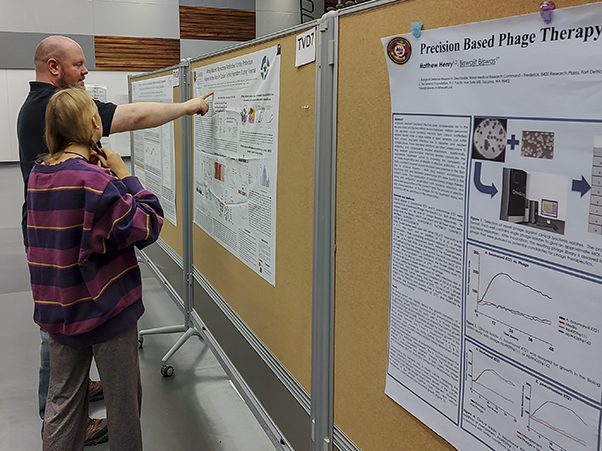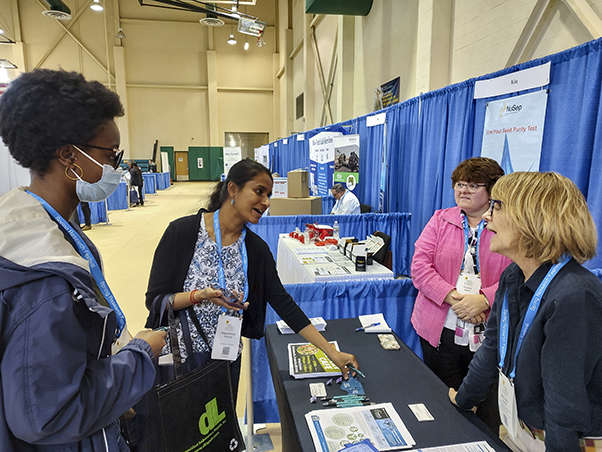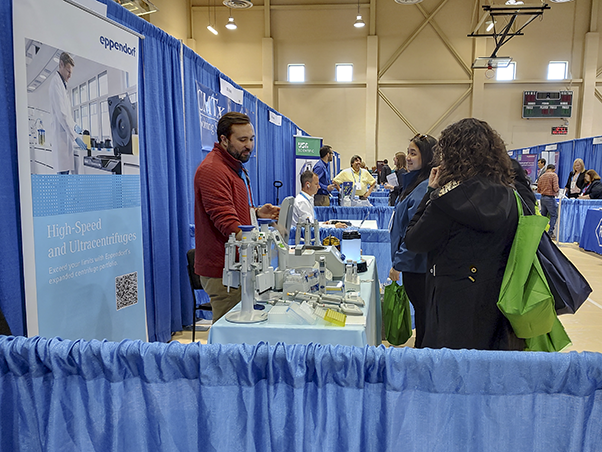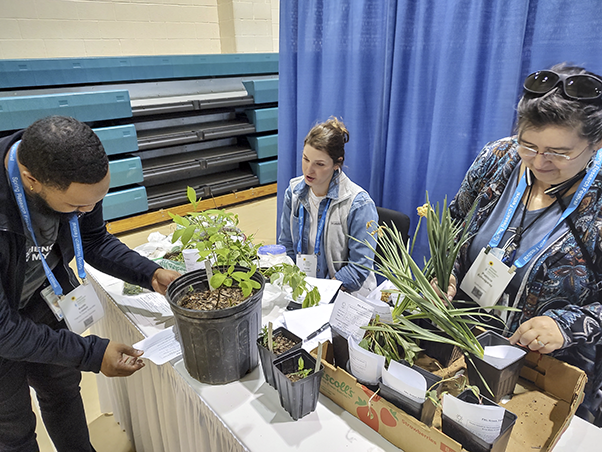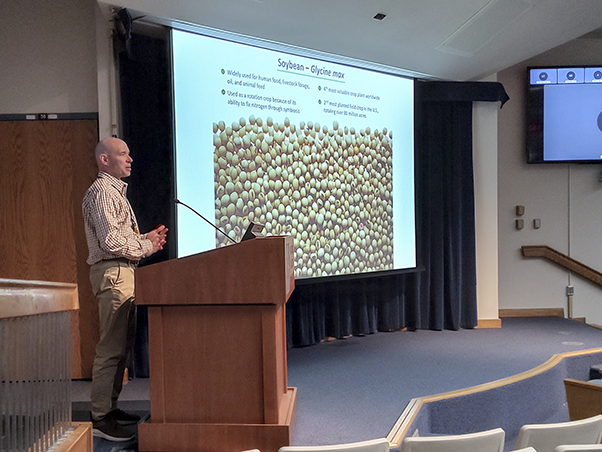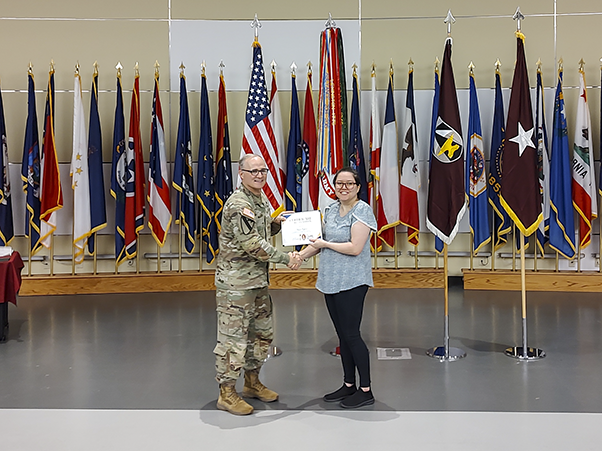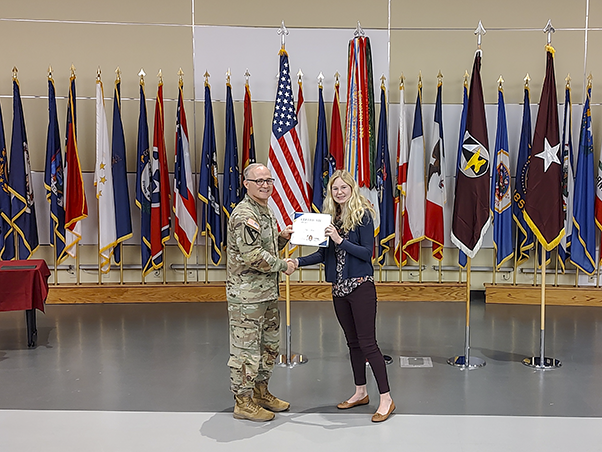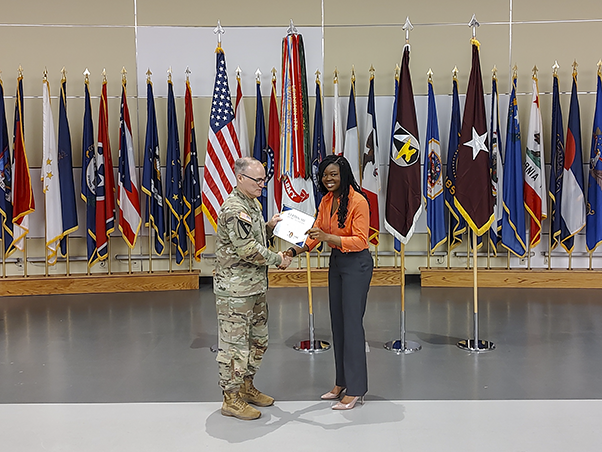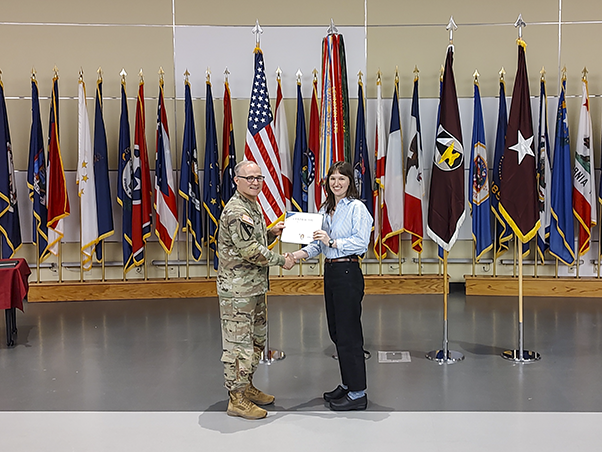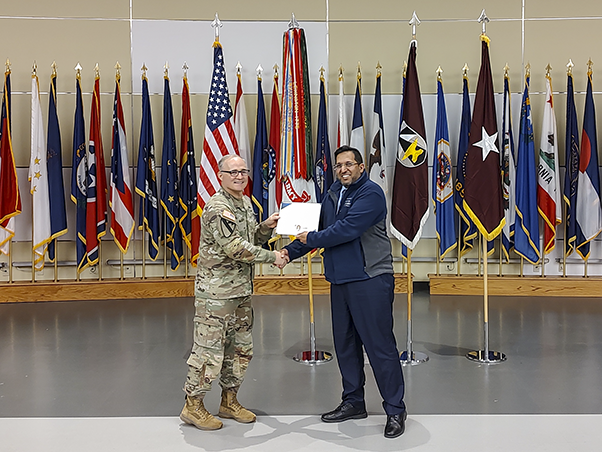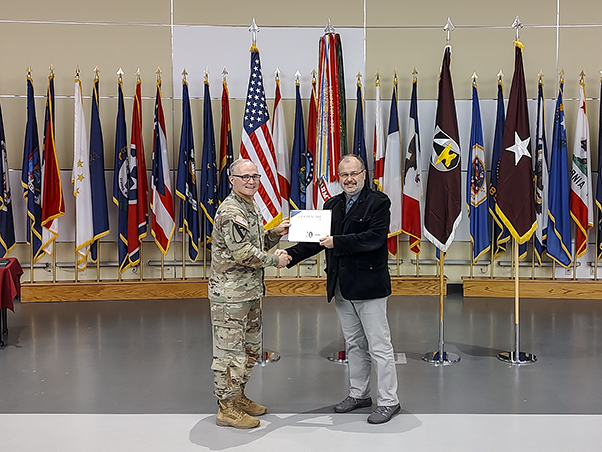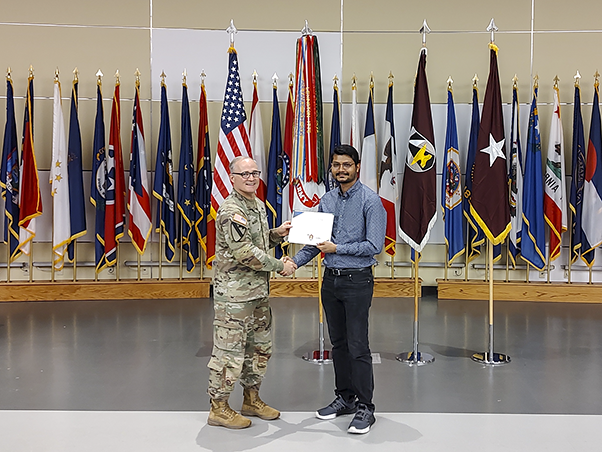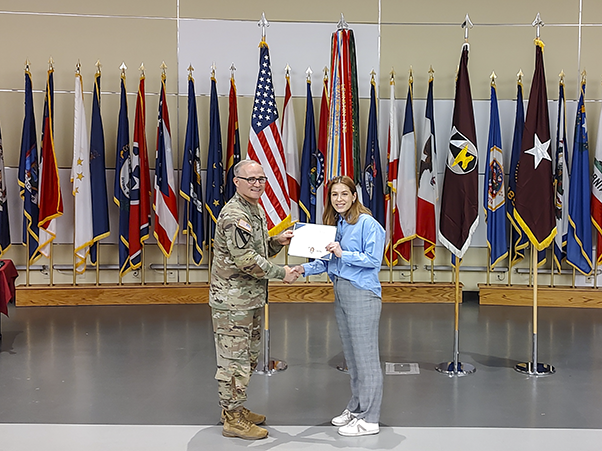The curtain has officially dropped on the Spring Research Festival for another year. With its signature vendor show, poster display, and bevy of lectures, the hybrid event looked much as it did in pre-pandemic times. Yet among the participants, there was an unmistakable impression of eagerness, a recognition of opportunity.
For a two-day event that exists to showcase science and stimulate collaboration, the return to in-person attractions proved to be a reminder of the spark that online meetings often lack.
For those attending, it was a chance to connect with colleagues across disciplines, a time to gain insight into others’ work. Some even saw it as a sort of proving ground.
Naman Jani, a high school student in NCI Frederick’s Werner H. Kirsten internship program, was one such participant. He took to the lectern in Building 549 to participate in the poster blitz, a timed session designed to challenge presenters to explain their research project in only a few short minutes.
Standing before an audience of scientists, Jani breezed through his presentation. A few approving grins and murmurs of, “That’s a high school student?” came from the spectators.
“It means a lot that I was able to participate and present my work to the research community at Fort Detrick,” Jani said after the event. “[It] helped me display and explain my research to others and get feedback on how I can build my experiments and results.”
In a way, he suggested, it also helped reinforce that interns and young scientists can stand shoulder to shoulder with their more established peers.
That idea resonated across the festival. Frederick Mayor Michael O’Connor, accompanied by city officials and National Interagency Confederation for Biological Research representatives, noted it as he made a circuit through the attractions.
“It’s always great to see the work that’s being done here and the variety of research that’s happening amongst all ranges of study, from high school students up to postdoctorate and long-time scientists, and how important all of that research is to disease-fighting efforts—and that it’s all happening here in Frederick,” he said.
He added that, in addition to this diversity of researchers, the diversity of biomedical research agencies on Fort Detrick and the NCI Frederick campus is “a great opportunity for the community.”
To Speak and Listen
Having sat in the audience of the young investigators symposium, a showcase of research by early-career scientists across agencies, O’Connor was able to witness some of that firsthand. There, researchers such as NCI postbaccalaureate fellow Kailin Guo found an opportunity and a platform to be heard.
In an enthusiastic lecture peppered with bits of humor, Guo told the audience about her group’s work on nanoscale structures for studying an Arf protein. The project has progressed well, she explained, but much remains to be done.
“It’s cool to be able to tell people about what you’ve been working on and see what other people are doing too,” Guo said after the festival.
Sadie Milhous, a postbaccalaureate fellow at NCI Frederick who won an award for her presentation in the poster blitz, felt similarly. She said she was excited to share her work and loved the chance to learn more of her colleagues’ research, especially those in different disciplines.
“I feel that participating in the Spring Research Festival gave me the opportunity to grow in my scientific communication skills and expand my knowledge of the research being conducted at Fort Detrick,” she said after the event.
Finding Feedback and Collaborators
On the Army’s neighboring campus, Satyaki “Sat” Roy, Ph.D., a bioinformatics analyst at Frederick National Laboratory (FNL), spent hours at the galleried poster display. He stood beside his poster at the end of a row, explaining the diagrams and information to passersby.
He was part of the team that built RARe-SOURCE, an online repository and tool for research on rare diseases, he said.
“I participated this year to highlight our research on the design of an AI workflow that mines genomic and clinical associations in rare diseases,” he said after the event. “It was wonderful to present my work to a broad community of researchers, students, and visitors.”
But it was also a chance to listen and solicit feedback. Roy concluded each discussion by pointing people to the RARe-SOURCE website, inviting them to explore it and submit suggestions to the team.
Although the festival’s hybrid format broadened access to the lectures, the poster display was a solely in-person attraction. That meant spectators missed out if they couldn’t make it to the Army’s campus.
Yurong Song, Ph.D., a senior scientist at FNL, was among them. Despite doing her best to watch the lectures, she missed meeting others at the poster display.
“I would like to find out what others are actively working on at Fort Detrick, and to see if there are any possibilities to collaborate with others,” she said.
‘A Great Example’
A short walk from the poster display, a different showcase was taking place in Fort Detrick’s fitness center: rows of booths were arranged wall to wall for the vendor expo.
It was a scene unique to the festival. A miscellany of participants in business suits, casual attire, and Army fatigues circulated through the displays, browsing scientific equipment. The festival’s hosts, the Military & Health Research Foundation and the U.S. Army Medical Research and Development Command, had set up their booths among the likes of Roche, Qiagen, and Thermo Fisher Scientific.
NCI Frederick and FNL were also present, with FNL’s Biomedical and Computational Science Directorate even hosting its own satellite booth. The room’s low hum of conversation was a testament to those capitalizing on the experience.
“From the first festival on (yes, I was there), it has always been the intent of the SRF to bring the agencies together, and I think that this year’s festival was a great example of how that can be accomplished,” said Howard Young, Ph.D., a senior investigator at NCI Frederick and an advisor to the festival planning team.
Back on the NCI Frederick campus, the festival wrapped up with a symposium featuring longer lectures from different agencies’ scientists. Some viewers tuned in remotely to watch alongside those present. As the final lecture ended at midafternoon, the small audience of scientists broke up into clusters before making their exit.
They were talking animatedly—about each other’s research.
Best in Show A group of spectators gathered on the Army’s campus the Friday after the festival for an awards ceremony recognizing outstanding posters and participants. NCI Frederick and FNL’s winners are below. Outstanding Posters Applied and Environmental Biology: Susan Egbert (NCI), tied with Michael Fulcher (USDA) Poster Blitz Winners Second Place: Lindsay Farr (NCI) Young Investigators Symposium Winners First Place: Elise Femino (NCI) |
Samuel Lopez leads the editorial team in Scientific Publications, Graphics & Media (SPGM). He writes for newsletters; informally serves as an institutional historian; and edits scientific manuscripts, corporate documents, and sundry other written media. SPGM is the creative services department and hub for editing, illustration, graphic design, formatting, multimedia, and training in these areas.


